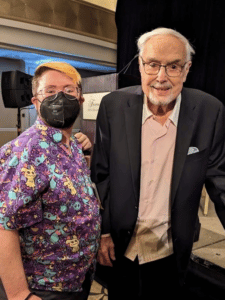
Patrick Gem Gabbett first experienced homelessness while living with his family. “I was homeless on-and-off in 9th grade, depending on whether my grandparents kicked us out or not. We’d stay in shelters or with family friends until they took us back.”
Their experience of homelessness didn’t end when they entered foster care. Instead, they graduated from high school while living in a shelter for youth in Sacramento.
Patrick is not alone in this struggle. On any given night in California, over 10,000 youth are unhoused and of this total, 70.5 percent are unsheltered. Instead of experiencing all that high school has to offer, Patrick worries that unaccompanied homeless youth are “watching their futures slip away from them, barely able to think of anything but survival.”
Fortunately, California is starting to turn the tide on youth homelessness. According to figures released this week by the U.S. Department of Housing and Urban Development, the number of unaccompanied homeless youth decreased 22 percent between 2020 and 2022 in California.
This was due in large part to two new programs to address homelessness in California. JBAY successfully advocated for a requirement that both programs require a set percentage of funding to be spent to assist unaccompanied homeless youth.
For JBAY, this reduction is not good enough. In 2023, JBAY has a legislative proposal to functionally end youth homelessness.
JBAY’s approach is based on a model in Washington State and developed by the national nonprofit Community Solutions. It is being utilized in 105 communities in the United States, including 11 in California.
In September, JBAY co-hosted a policy briefing with California State Senator Anna Caballero to inform California stakeholders about the approach and build support.
Key elements of the approach include the use of a “by-name” list and quality, real-time data. Together, these two strategies have been key to significantly reducing homelessness among veterans and are being adapted to other groups of individuals experiencing homelessness, including youth.
JBAY’s proposal is modeled after California’s Family Homelessness Challenge, which provided $40 million to 10 local jurisdictions in 2022. These communities were required to set specific goals in the first year and if achieved, will result in a second year of funding.
JBAY’s unique take on this program will be to focus it on unaccompanied homeless youth and apply the approaches developed by Community Solutions. According to Housing and Health Program Manager Andy Lomeli, this approach is the missing ingredient in California.
“California has significantly invested in reducing youth homelessness in the last five years. The approach used in Washington State and other communities can help us get across the finish line and end the unacceptable practice of youth experiencing homelessness.”
This is music to Patrick’s ears. After four years living in transitional housing, he recently became safely housed. But he suffered considerably while homeless and feels the legacy of that experience today.
“If I hadn’t experienced homelessness, I would have been able to lead a more stable life in high school and college. It would have been a lot easier for me to deal with my physical and mental disabilities.” According to Patrick, “ We have the opportunity to change this and build a stronger safety net for youth.”
Patrick’s journey has been difficult, but he has remained committed to his health and well-being as well as his education. They attended Sacramento City College and recently transferred to San Francisco State, where they study library science. On December 15th, Patrick attended John Burton’s 90th birthday party and helped educate guests about the advocacy of JBAY. They also met House Speaker Nancy Pelosi.
According to JBAY Executive Director Amy Lemley, Patrick demonstrates the courage and commitment California requires to solve a large, complex problem like this. “Patrick is not giving up and we can’t either. He faced tremendous odds and is succeeding. We can do the same.”
